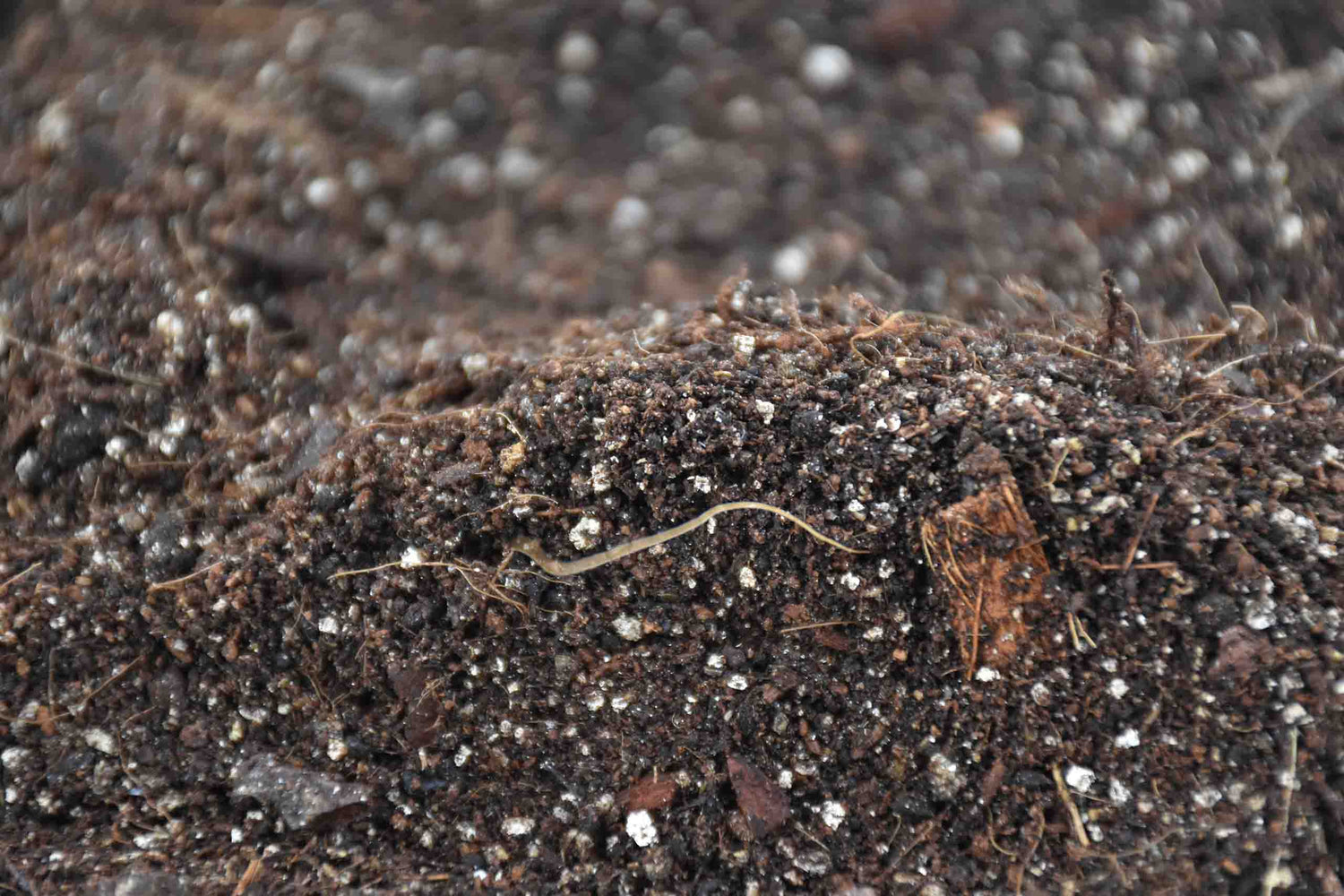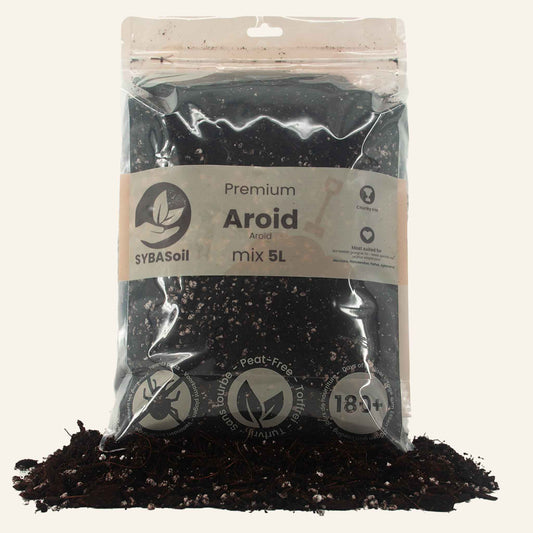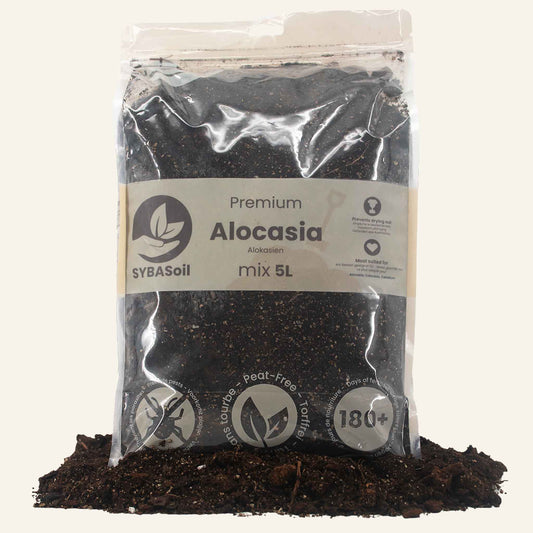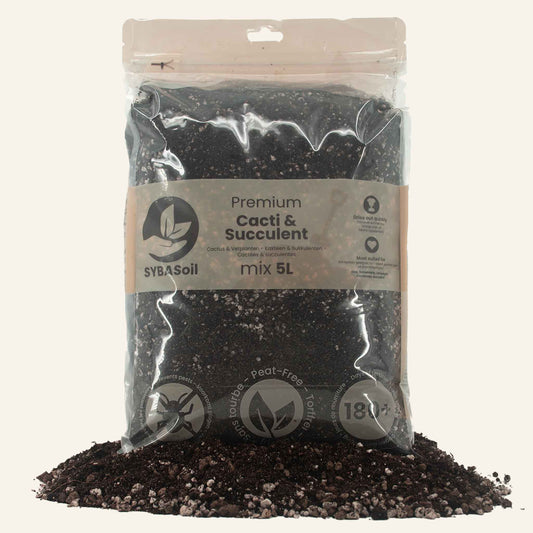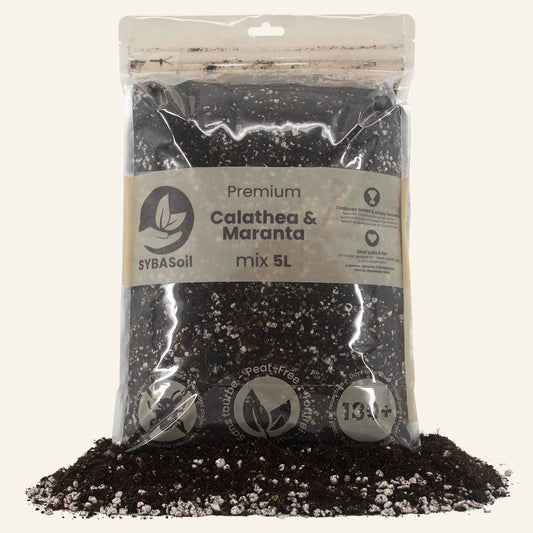As a plant lover, you know that taking care of houseplants can be both a fulfilling and challenging task. One of the biggest threats to the health of your plants is root rot. Root rot can seriously damage your plants.
So it is important to know how to recognise, prevent and treat it. In this article, we will talk about what exactly root rot is, what causes it and how it damages your plants.
We will also give you some tips on how to prevent and treat root rot. After you have read this article, you will be able to recognise, prevent and combat root rot!
Recognising root rot
If you suspect root rot, the following may be an indication that it is real:
- The leaves of your plant show discolouration and have brown spots
- Your plant's leaves are starting to die or shrivel up
- Your plant's roots do not smell fresh (fungal smell)
- Roots feel soft and/or spongy
- The roots are brown and/or slimy
- Water is not absorbed properly
What is root rot
Root rot is a term used to describe a condition in plants. It refers to the situation where the roots of a plant are affected. This is due to a combination of various fungi, bacteria or other pathogens. This infestation can lead to damage and deterioration of the roots. Which in turn can affect the growth and health of your entire plant.
Causes of root rot
One of the most common causes of root rot is overwatering. This can cause the plant's roots to be unable to absorb nutrients. Using soil with poor drainage can also contribute to root rot. For example, if your soil starts to become lumpy and compact. This prevents your plant from feeding its roots because the pores in the soil are too small. This can also be exacerbated if not enough oxygen gets into the soil. Damage to the roots can also lead to root rot. So, this can also happen during repotting if the roots are handled too roughly.
How does root rot damage my plant?
Root rot can affect and damage your plant's roots. This can lead to reduced uptake of nutrients and water. If root rot is not treated in time, your plant's roots can become very damaged. These damaged roots are unable to absorb essential nutrients needed for survival. This can eventually lead to the death of your plant, and you don't want that!
Tips to prevent root rot
One of the best measures to prevent root rot is to make sure you have adequate drainage in the bottom of your pots. This allows excess water to drain away easily. Which allows the roots of your plants to breathe better.
The right soil
Two things affect this: potting soil & plant pots. If you don't have the right potting soil, your soil can retain too much water. This can cause the roots to rot. Our SYBASoil mixes are designed to hold just the right amount of water per plant species. Buy our plant-specific potting soil here.
Our potting soil provides the right structure that drains excess water quickly.
The right pot
Another measure is to make sure your plant pot is not too big in relation to the plant itself. Too much space can cause soil to stay damp for too long. It is also important that your pot has a hole so that water can leak away. There are many claims that putting hydro grains in a closed pot prevents root rot. But this is not a good idea for most plant species.
You can't see how much water is in the layer of hydro grains, and you can easily give too much. A hole in your pot is the only safe solution for preventing root rot. Buy the right plant pots, such as nursery pots here.
How to control root rot
Ah no... Try to carefully remove the damaged or affected roots first.
Step 1. Remove the roots
Healthy roots look white and firm. You can remove the brown, slimy roots with scissors. Make sure the scissors are clean and sharp to prevent further infection. It is advisable to hold the plant under a tap to remove old soil. This may contain bacteria that will make the root rot come back.
Step 2. Repot the plant
Next, repot the plant in clean potting soil or substrate, such as plant-specific potting soil. This contains enough important nutrients, air permeability and water capacity . Read more about how best to repot a plant here.
Step 3. Prune the plant (optional)
If you have removed a lot of the roots, consider pruning part of the plant. Considering the ratio of roots and plant is no longer equal to each other. Then pruning can help the plant recover. However, there is also a risk that the plant will go into shock and stop growing for a while.
Does root rot go away by itself?
Root rot in houseplants does not go away by itself. If you begin to notice that your plants are showing symptoms, act quickly. This will help you minimise the damage caused by root rot.
The different types of root rot.
Root rot can have two causes. The first is prolonged exposure to over-watered conditions. This can cause some roots to die due to lack of oxygen. As they die off, they may begin to rot or rot away. The rot can then spread to healthier roots and kill them as well. Even if soil conditions are corrected. The other source may be a fungus in the soil. The fungus can lurk in the soil endlessly. And then suddenly blossom when the plant is overwatered once or twice. The root rot fungus attacks the roots and causes them to die and rot away. So if you suddenly have root rot even though the plant was not overwatered, it was probably due to a fungus.
Conclusion
Root rot can be a major threat to the health of your plants. So it is important to know how to recognise and treat it. Make sure you regularly check the health of your plants.
Make sure you use the right plant-specific potting soil & plant pots, and don't water too often. If you always want to keep an eye on them, a transparent pot is very handy!
If it does happen, carefully remove the damaged roots. And replace the old soil or substrate with a new and suitable one. Your plant will thank you!
